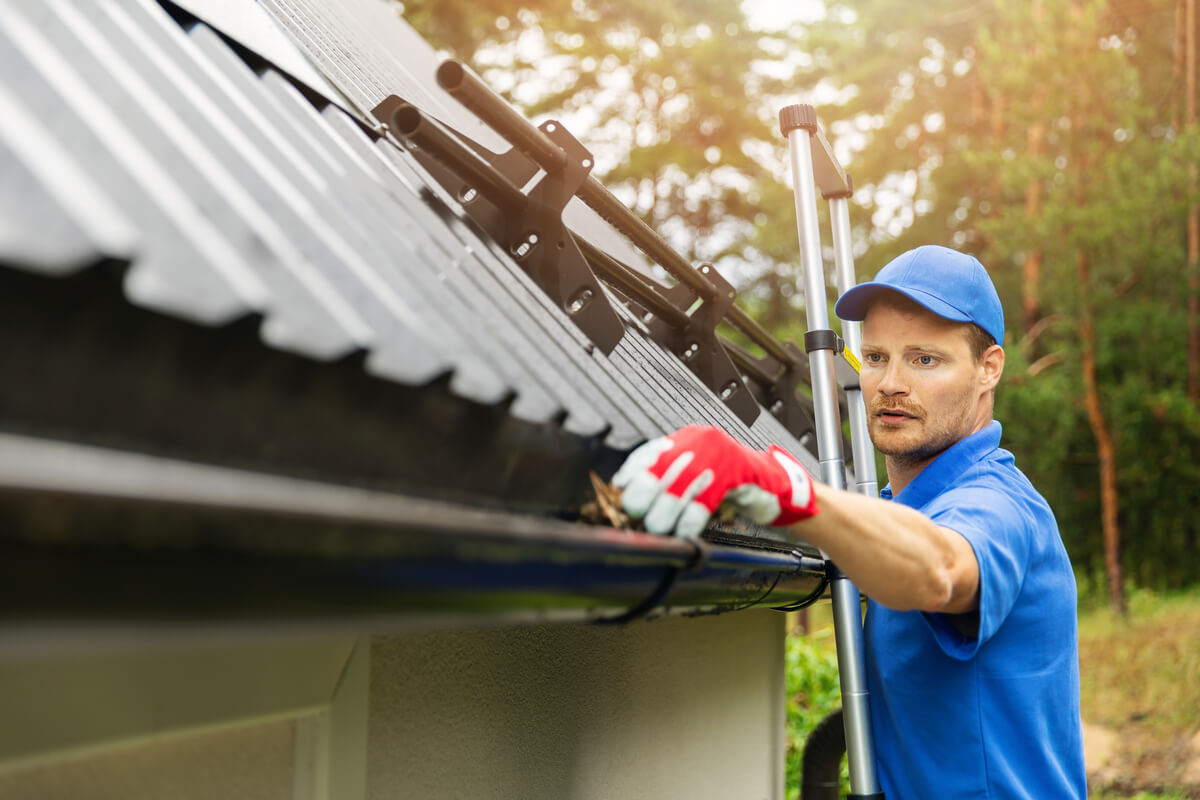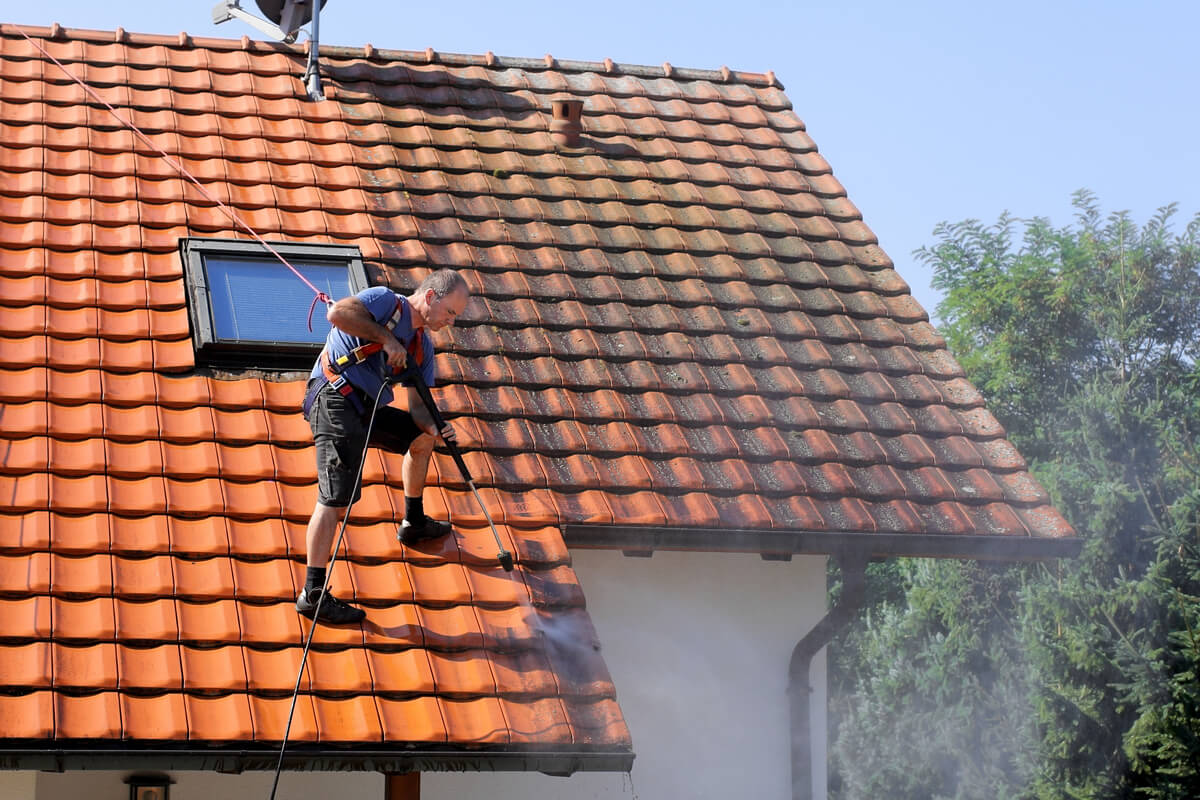Your home’s gutters provide a vital function, and regular upkeep is important for keeping them in good condition. Preventative maintenance is more cost-effective and less time-consuming than hiring a professional when something goes wrong. Taking good care of your gutters keeps your home safe from water damage, and it greatly extends the lifespan of the gutters themselves. Here are some key gutter maintenance tips for homeowners:

Clean the gutters twice per year.
Failing to regularly clean your gutters can be detrimental to your home. The gutters displace water that could otherwise damage the house’s foundation, so unmaintained gutters could lead to serious foundation issues. You could also run into problems with flooding in the basement.
It’s generally best to clean your home’s gutters twice per year. Experts recommend doing this in late fall and late spring to prepare for the changing of the seasons. However, checking your gutters for debris or damage more regularly is never a bad idea. After a major storm, you should inspect the gutters to make sure leaves or other debris haven’t clogged the gutters.
To clean the gutters, you’ll need a ladder, gloves, a gutter scoop, a bucket, and a hose. Safety goggles and a mask are also helpful if you’re sensitive to environmental allergens. Wear nonslip shoes so that you remain secure on the ladder, and don’t hesitate to call a professional if you don’t feel comfortable performing the task yourself.
With gloved hands, use the gutter scoop to remove the debris in the gutters and place it in the bucket. Any plastic shovel or garden trowel should work to scoop out the gunk. Then, use the hose to wash out any remaining dirt.

Use a coat hanger to loosen debris in the downspout.
Many homeowners focus only on the gutters when cleaning, but the downspouts are just as important. Leaves, pine needles, twigs, and dirt can build up and clog the downspouts, preventing water from properly draining. If you notice that the water isn’t draining as you flush out the gutters, the downspout is probably clogged.
You can try to loosen up clogs in the downspout by inserting the hose into the spout and spraying with full pressure. If the debris still won’t loosen up, you could use a snake to clear out the downspout. However, a coat hanger also works well to loosen up debris if you don’t have a snake or another appropriate tool. Unbend the coat hanger, and use the wire to break up the clog. Then, you should be able to flush out the debris with the hose.

Keep your roof clean.
Much of the debris that ends up in the gutters comes down from the roof. To prevent clogs and to make gutter cleaning an easier experience for you, remove leaves and pine needles from the roof with a roof rake.
Cleaning your roof can be a challenging and risky task, so you should only do it yourself if you’re completely confident. Never go on the roof if it’s wet or icy or if weather conditions are windy. Most homeowners prefer to hire professional contractors for roof cleaning.

Inspect the gutters and downspouts for rust and corrosion.
Cleaning out the debris in the gutters may be your main priority, but this is also a great time to inspect them for signs of damage. Any rust, corrosion, cracks, or holes can result in water damage to your home. The gutter joints are the most vulnerable to wear and tear.
If you notice any cracks or corrosion at the gutter joints, you can use a gutter patching kit to fix the damage. You should also apply a sealant to prevent leaks. Gutters that look extremely worn or rusted probably need to be replaced.

Check the positioning of the gutters.
Even if the gutters are in great condition, your house is vulnerable to water damage if the gutters aren’t properly positioned. Gutters that don’t have a strong enough slope may not adequately direct water away from the home. Gutters with too strong of a slope may drain too quickly, which can result in damage to the home’s exterior.
The recommended gutter slope is about one-quarter inch for every 10 feet. You can adjust the gutter positioning by removing the gutter pegs and loosening the gutter with a screwdriver and crowbar. Then, turn the gutter to the correct angle, and replace the pegs.

Install a gutter guard.
Installing a gutter guard is a great way to prevent debris from clogging up the gutter. Investing in guards now can save you time and money on gutter maintenance in the long run. You can purchase gutter guards at your local hardware store. Screw-fasted guards tend to be the most durable, but installation is a more involved process. If you want a simpler fix, look for snap-on gutter guards.
Gutter maintenance may be tedious, but it’s essential for protecting your home against water damage. At least twice per year, you should clear debris out of the gutters and downspouts and inspect for damage. Preventative maintenance can save you a fortune by preventing the need for major repairs. However, you should only perform gutter maintenance yourself if you’re fully confident in your skills. If you have any questions or concerns, contact a professional.







